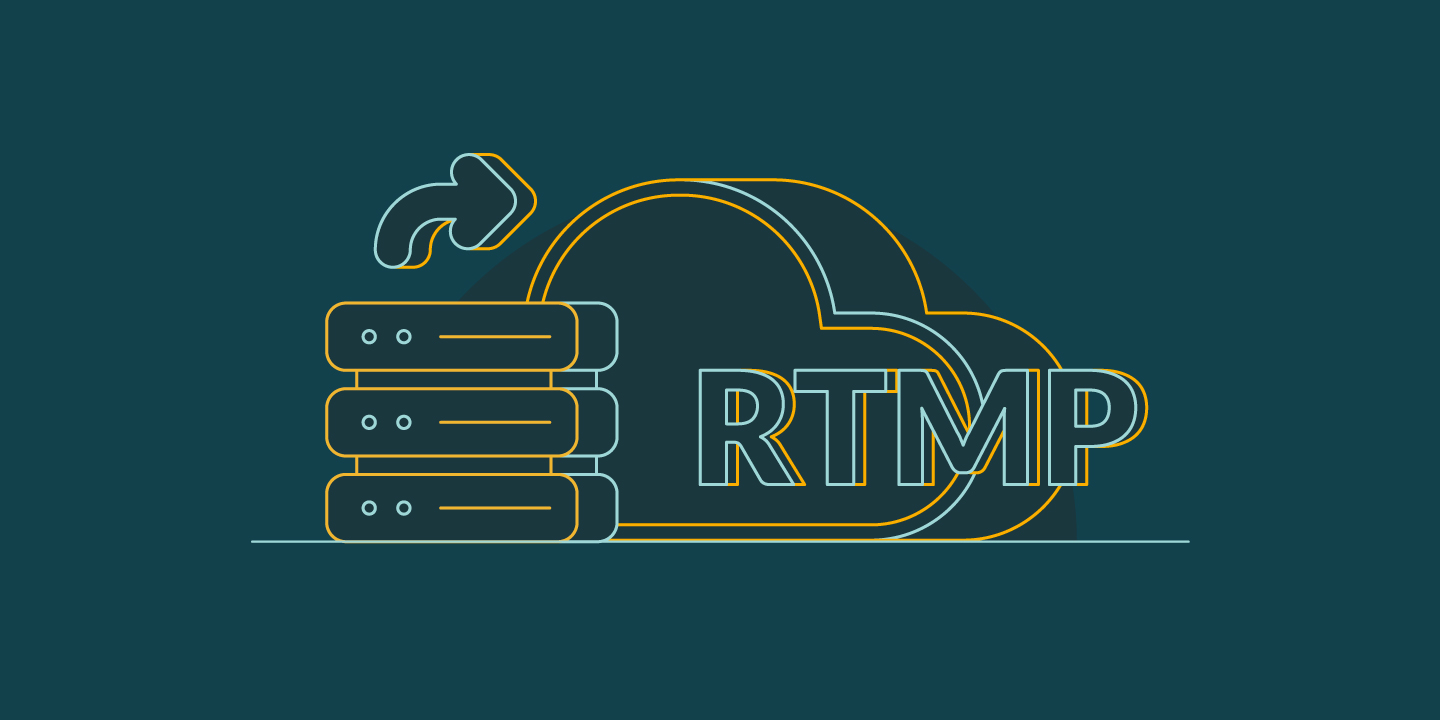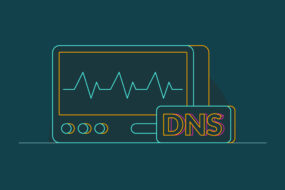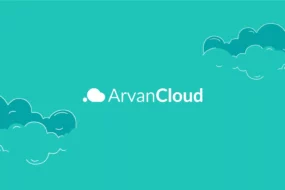
Over the past few years, online video streaming technology has become increasingly popular, enabled by new technologies such as RTMP which has played a significant role in developing online video streaming technology.
In 2002, the Real-Time Messaging Protocol (RTMP) was introduced to stream live video. Since then, RTMP has evolved from a consumer tool to a tool used more professionally.
The focus of this post is to break down everything you need to know about RTMP and its relationship to live streaming. We’ll discuss what RTMP is and look at the more technical aspects of it.
What is RTMP?
As the name suggests, Real-Time Messaging Protocol (RTMP) is a protocol for enabling live video streaming over the Internet. It is based on the Transmission Control Protocol (TCP) and was initially developed by Macromedia for its Flash Player. It was later named Adobe Flash Player after the company was acquired by Adobe and became Adobe Flash Player.
The original purpose of RTMP was to transmit video content between a video player and a host server. As a result of modern live streaming setups, RTMP’s primary function is to transfer content from the encoder to the video host rather than vice versa. Ingestion is the process by which this type of delivery is accomplished.
The role of RTMP has expanded with its new live-streaming function; the scope of its previous functions has also been somewhat reduced. It can perform low-latency streaming, which is extremely useful for live-streaming significant events. In addition, RTMP streaming also offers the advantage of minimum buffering, which significantly improves the user experience.
RTMP streaming is a great way to deliver low-buffer content to users and to provide adaptive-bitrate streaming for a few web conferencing tools, as well as others.
RTMP at a Glance
Here are some facts about the RTMP protocol that will help you better understand what it is and what it does in terms of video content in general.
- The RTMP protocol is best known for transmitting video files from a hardware encoder to an online video hosting platform via the Internet.
- There are many variations in RTMP, and they can be streamed over TCP and UDP simultaneously.
- The RTMP protocol does not stream content over HTTP; however, the HLS protocol does so.
- There is support for AAC and MP3 audio codecs in RTMP.
- RTMP encoding is often based on the H.264 video codec, but it can also be used for other video codecs, such as x264.
- When using RTMP ingest, you can take advantage of low-cost tools to encode your content.
The RTMP protocol is technically discontinued, although some transcoders are still capable of using it, and RTMP can still be used to carry out broadcast workflows and contexts in different ways.
How Does RTMP Work?
The Real-Time Messaging Protocol (RTMP) is a TCP-based network protocol that provides “bi-directional multiplexing” of messages over a reliable stream transport between a pair of communicating peers, e.g., communication between the RTMP server and the client (for instance, a player, web browser, mobile device).
Since RTMP keeps a steady connection open between the player client and server, it can function as a pipe to send video data quickly to the viewer. RTMP needs a three-way handshake to convey data because it sits on top of the Transmission Control Protocol (TCP). A connection is established when the initiator (client) requests it from the accepter (server), who then answers. The initiator then accepts the accepter’s response and the session is maintained between the two parties.
This makes RTMP a very dependable protocol. When the streams are sent over a network, they are divided into smaller chunks called fragments and interleaved to ensure smooth transmission. It is possible to configure the fragmented stream size for optimal performance. Larger fragment sizes reduce CPU usage but also cause larger writes, which can delay other content on low bandwidth connections.
It is not necessary to use small fragments when streaming at high bit rates. Each fragment size is maintained individually for each direction, but the splitting fragments are interleaved and multiplexed over a single connection so that, based on the size of the splitting fragments, each channel meets bandwidth latency requirements and other quality-of-service requirements.
It is important to note that messages interleaved in this manner are considered indivisible and are not interleaved at the fragment level. Real-Time Messaging Protocol (RTMP) encapsulates video in the format of MP4 and FLV and audio in the formats of AAC and MP3.
A Brief History of RTMP
Let’s take a trip back to the internet stone age 1996 when Macromedia launched RTMP. This TCP protocol allowed its Flash Media player to connect with a dedicated media server to deliver some of the first live streaming over the Web.
Despite Adobe’s acquisition of Macromedia in 2005, RTMP support continued to be provided by the Flash plugin until 2008, even becoming available to the general public.
Flash was eventually discontinued in 2020 due to security concerns. Because the technology was advancing to encompass more places for live streaming output, including over-the-top channels and mobile devices – thus, conventional RTMP technology had been obsolete at this time.
While the RTMP protocol still exists, it is used primarily by live streamers to ingest stream data today using a stream encoder. This stream is then converted into a format that can be viewed on any device. The delivery speed of video was also improved by adding content delivery networks, such as those included with the Flowplayer, to ensure the best possible video quality.
Is RTMP Outdated or Still Used?
RTMP is still used and remains indispensable for many producers and event organizers to use its encoders as a means of broadcasting live events around the world because they can stream over a multitude of devices with low latency and smooth operation.
Aside from this, the pandemic also triggered a rise in virtual streaming, which fueled the idea that connecting guests who were not physically able to attend the event was necessary.
For live events with limited seating capacity, RTMP streaming was also an effective video transmission protocol during the pandemic. Now that things are returning to normal, RTMP streaming remains an effective option for live video broadcasts.
Pros and Cons of RTMP
As with anything in life, RTMP has its benefits, but there are also a few disadvantages associated with this protocol as well. Here are some of the major advantages associated with real-time messaging protocol are highlighted below:
Here are some of the advantages of RTMP technology:
- Low Latency: It mainly refers to a reliable connection that won’t break even if the channel between the viewer and the server is a little shaky when referring to live broadcasts. The importance of this measure to video quality cannot be overstated.
- Adaptability: In the context of a broadcast, adaptability refers to the user’s ability to join and leave a broadcast at any time, as well as seek backward (and then forward) and join the live stream once it begins. These are quite helpful capabilities for video conferencing online, live streaming, streaming video games, and basic video calling.
- Flexibility: With the seamless blending of video, audio, and text (subtitles) on the viewer’s screen, RTMP technology enables the integration of diverse forms of multimedia material into a single cohesive package. The protocol also allows for the transmission of video in formats like MP4, FLV, and F4V, as well as audio streaming in AAC and MP3 codecs.
There are also some disadvantages that you may need to consider before starting to use RTMP:
- No HTML5 support: The HTML5 Player is currently incapable of playing RTMP streams. HTML5 is considered the industry standard for video playback on user-side devices such as Firefox, Google, Microsoft, Apple, and Opera. However, to convert an RTMP stream to HTML5, Apple’s HLS converter is required.
- Bandwidth issues: The RTMP protocol has some low bandwidth vulnerabilities, so you may experience intermittent interruptions during streaming, which can negatively impact your enjoyment of the broadcast
The Best Alternatives to RTMP
After we have deduced enough about RTMP from what we have learned so far, let us explore some other alternatives to it.
HLS streaming protocol
The HTTP Live Streaming (HLS) protocol is an HTTP-based protocol that uses adaptive streaming to deliver video and audio to end users’ devices. It was developed by Apple in 2009, one year before it announced the legendary iPhone 3G.
Previous generation iPhones had trouble playing live streams, so Apple developed the HLS to address this problem. It is the most commonly used streaming protocol in recent years; it has many features that make it an excellent alternative to RTMP.
Features of HLS protocol
- Closed Captions
- Fast Forward and Rewind
- Alternate Audio and Video
- Fallback Alternatives
- Timed Metadata
- Ad Insertion
- Content Protection
CMAF
CMAF (Common Media Application Format) is basically a new format for simplifying the delivery of HTTP-based streaming media. It is an emerging standard that reduces cost and complexity and provides a streaming latency of about 3-5 seconds.
As a result of Apple and Microsoft’s proposals, a new uniform video format called CMAF will be created to lower complexity when transmitting video over the internet.
Since RTMP is no longer in use, other HTTP-based adaptive bitrate streaming technologies have developed. However, different streaming protocols require different file formats for different file containers, such as MPEG-DASH streams being delivered in MP4 containers, while HLS streams are offered in ts containers.
The CMAF protocol is one of the best alternatives to the RTMP streaming protocol when you want to achieve low-latency streams.
Advantages of CMAF Streaming
- Cutting Costs
- Minimizing Workflow Complexity
- Reducing Latency
WebRTC
WebRTC stands for web real-time communications. It is a powerful and disruptive cutting-edge streaming protocol that is extremely exciting and powerful.
Since WebRTC is compatible with HTML5, it can be utilized to communicate directly with the device using real-time media.
Furthermore, WebRTC has been developed as a support component for all major modern browsers, including Safari, Google Chrome, Firefox, Opera, and numerous others. All of these support WebRTC without the need to install a prerequisite plugin. If you wish to add WebRTC to any browser, you will not need to install a prerequisite plugin.
Advantages of WebRTC
- Ultra-Low Latency Streaming – Latency is 0.5 seconds
- Platform and device independence
- Advanced voice and video quality
- Secure voice and video
- Easy to scale
- Adaptive to network conditions
- WebRTC Data Channels
RTMP streaming cannot be considered an alternative to WebRTC since WebRTC is the only protocol that can achieve ultra-low latency. However, WebRTC is not the only protocol that can achieve ultra-low latency.
Which Encoders Support RTMP?
In the context of RTMP encoding, broadcasters have a wide variety of options, so they may choose either software or hardware encoding. Many options are available to suit virtually any budget and requirement.
The following is a list of some of the best options for RTMP encoders that you can choose from:
- OBS Studio: Almost any broadcaster can use OBS Studio because it is free, open-source encoding software that can be used by any broadcaster.
- Wirecast: A popular software encoder from Telestream, Wirecast, is available for a starting price of $599, a price point that makes it the best choice for more advanced broadcasters.
- VidBlaster: The VidBlaster software provides broadcasters with the capability of editing, mixing, encoding, and streaming live streams in addition to editing, mixing, and encoding live streams. This software offers a professional touch to live streaming for a reasonable monthly fee. You can begin immediately, and it will only cost you a couple of dollars monthly.
- vMix: vMix is another live streaming software program that you can use to encode your live content. It is currently available for free but has a lifetime license option available for $1200.
- TriCaster: There is a series of encoding devices called TriCaster manufactured by NewTek. The series includes both portable and stationary devices.
Overall, RTMP is one of the most-preferred protocols by VoD website owners. Click on the link to read more about ArvanCloud Video Platform and sign up for a FREE package of this product.






